The Brownie Outdoor Art Creator Badge is an engaging way for girls to connect with nature while exploring their artistic side. Through hands-on projects, they learn to observe, create, and appreciate the outdoors, fostering creativity and environmental awareness.
Overview of the Badge
The Brownie Outdoor Art Creator Badge is a fun and creative way for girls to engage with nature while developing their artistic skills. This badge, part of the Girl Scout program, encourages Brownies to explore the outdoors as a source of inspiration for art projects. The badge requires completing five nature-based activities, such as scavenger hunts, leaf rubbings, and designing with natural materials. Girls also learn to observe their surroundings using their senses and create meaningful art pieces. The badge emphasizes the importance of connecting with nature and using it as a canvas for creativity. By earning this badge, girls gain a deeper appreciation for the environment and develop their ability to express themselves artistically. The activities are designed to be hands-on and interactive, making the learning process enjoyable and memorable. This badge is a great way to foster creativity and environmental awareness in young girls.
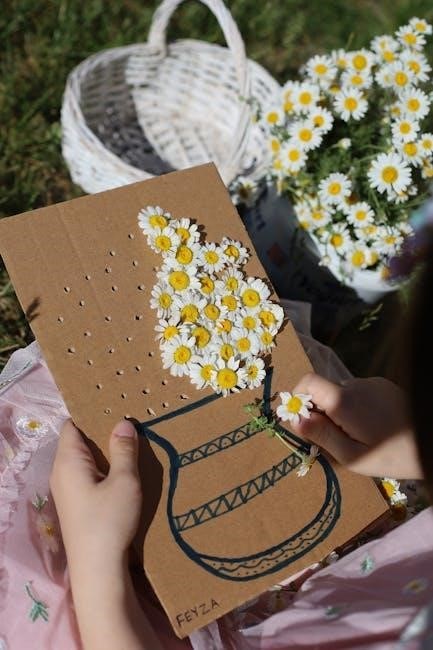
Understanding the Requirements
Earning the Brownie Outdoor Art Creator Badge involves completing five nature-based projects, such as scavenger hunts and leaf rubbings, while following safety practices and reflecting on the experience.
Key Components of the Badge
Earning the Brownie Outdoor Art Creator Badge requires completing five nature-based art projects that foster creativity and environmental awareness. Key components include:
- Using natural materials like leaves, sticks, and rocks to create art.
- Exploring outdoor environments to inspire artistic expression.
- Practicing Leave No Trace principles to minimize environmental impact.
- Reflecting on and sharing the creative process with others.
- Building a miniature outdoor home, encouraging imaginative design.
These activities emphasize observation, creativity, and stewardship, helping girls connect with nature while developing artistic skills.
Importance of Nature-Based Activities
Nature-based activities are vital for fostering creativity, curiosity, and environmental stewardship in girls. These experiences help develop observation skills, encouraging girls to see the world as a source of inspiration. By engaging with nature, they learn to value ecosystems and understand the importance of conservation. Nature-based art projects also promote teamwork and problem-solving, as girls work together to create art using natural materials. Such activities build confidence and self-expression, allowing girls to explore their artistic identities. Additionally, spending time outdoors enhances physical and mental well-being, providing a refreshing break from daily routines. The Outdoor Art Creator Badge ensures girls have meaningful interactions with nature, creating a lasting appreciation for the environment and its role in artistic expression.

Step-by-Step Guide to Earning the Badge
Earn the Brownie Outdoor Art Creator Badge by completing five nature-based steps: observe with your senses, create leaf rubbings, design with natural materials, build a small outdoor home, and reflect on your art.

Step 1: Use Your Senses in Nature
Begin by exploring the outdoors with curiosity and intention. Use your senses to observe the natural world around you. Start by listening to the sounds of birds, rustling leaves, or flowing water. Smell the earthy scent of the ground or the fragrance of blooming flowers. Feel the texture of tree bark, the softness of grass, or the roughness of rocks. Look closely at the colors, shapes, and patterns in nature, such as the veins on a leaf or the intricate details of a flower. Use a magnifying glass to examine small objects like insects or shells. Finally, taste a natural element, like a ripe berry (if safe to do so). This step helps you connect with nature and sparks your creativity for future art projects. Remember to record your observations in a notebook or sketchbook to inspire your work.
Step 2: Create Leaf Rubbings and Drawings
For this step, gather various types of leaves and place them under a sheet of paper. Use a crayon or pencil to rub over the leaf, applying gentle pressure to capture its texture and shape. This technique creates a detailed leaf rubbing. Next, draw the leaves you’ve collected, observing their shapes, veins, and edges. Pay attention to the colors and patterns, and consider sketching them in different angles or lighting. You can also experiment with layering multiple rubbings to create a collage effect. This activity helps you develop observation skills and connects you with the natural world. Encourage creativity by adding colors or imaginative elements to your drawings. Remember to use materials responsibly and leave the outdoor space as you found it. This step fosters artistic expression while deepening your appreciation for nature’s beauty.
Step 3: Design with Natural Materials
In this step, explore the outdoors to gather natural materials like sticks, rocks, leaves, and pinecones. Use these items to create a design or pattern on the ground or a flat surface. You can make shapes, symmetrical patterns, or even a miniature version of a Brownie Elf house. Arrange the materials thoughtfully, considering texture, color, and size. Take inspiration from nature’s beauty and experiment with different compositions. This activity encourages creativity while connecting you to the environment. Remember to follow Leave No Trace principles by leaving the materials in their natural place after you’re done. Document your design with photos or sketches to share your artistic process. This step helps you see nature as a source of inspiration and fosters a deeper appreciation for the outdoors. Let your imagination guide you as you craft unique art using the natural world as your canvas.
Step 4: Build a Miniature Outdoor Home

In this fun and imaginative step, you’ll create a tiny outdoor home for a Brownie Elf, pretending it’s 3 inches tall. Start by selecting a suitable location in your backyard, such as under a tree or near a bush. Gather natural materials like twigs, leaves, rocks, and pine needles to construct the home. Use sticks to form the frame and leaves or bark for the roof. Add details like a tiny door or pathway to make it cozy. Consider what the elf might need, like a bed made of moss or a small table. Be creative and think about how to use the materials to build a sturdy and charming home. Remember to follow safety guidelines and avoid harming plants or wildlife. This activity helps you practice problem-solving and creativity while connecting with nature. Share your finished home with others and explain the design choices you made. Building this miniature home is a delightful way to explore the outdoors and let your imagination shine.
Step 5: Reflect and Share Your Art
After completing your outdoor art projects, take time to reflect on your experiences and share your creations with others. Discuss what you enjoyed most about working in nature and what challenges you faced. Share your art with family, friends, or your troop, explaining the inspiration behind each piece. Consider displaying your work in a community space or creating a portfolio to showcase your projects. Reflecting on your journey helps you appreciate your growth as an artist and deepens your connection with nature. Sharing your art fosters pride and inspires others to explore their creativity outdoors. This final step reinforces the joy of creating art in nature and the importance of sharing your unique perspective with the world. It’s a meaningful way to celebrate your achievements and encourage others to embrace outdoor creativity.
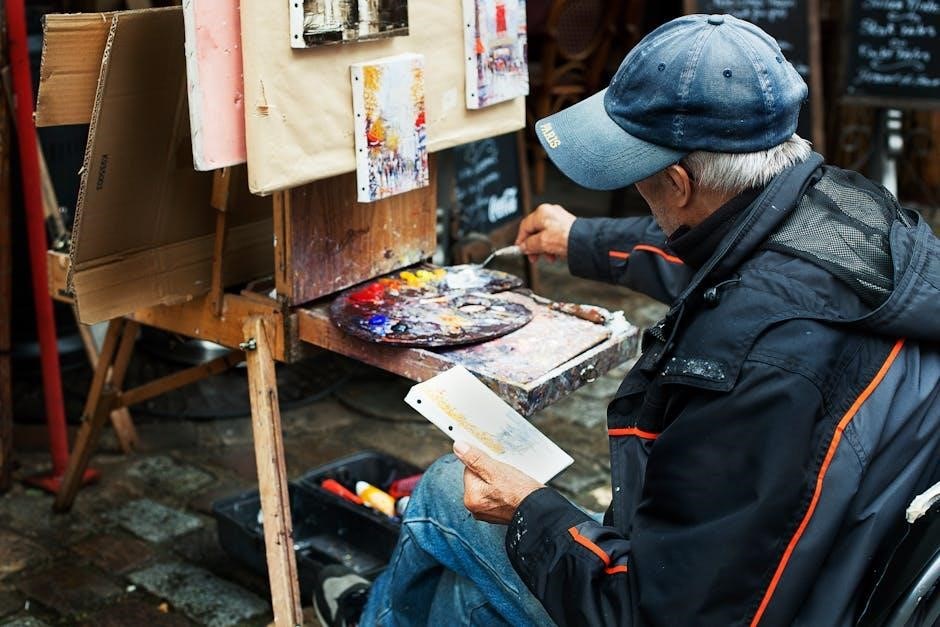
Nature-Based Art Projects
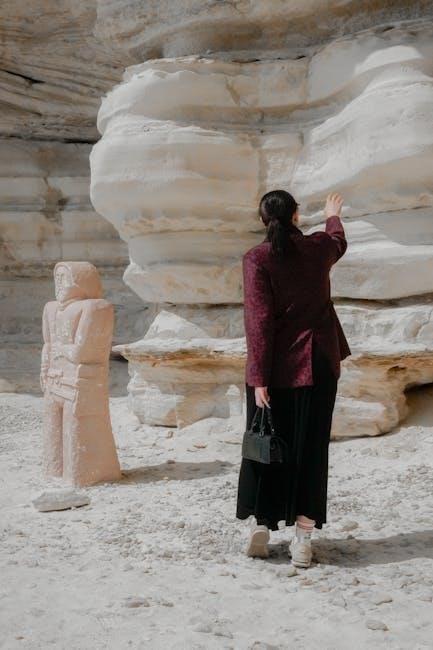
Explore creative projects that connect art and nature, fostering observation, imagination, and environmental appreciation. These activities inspire girls to express their unique perspectives while engaging with the outdoors.
Project 1: Nature Scavenger Hunt
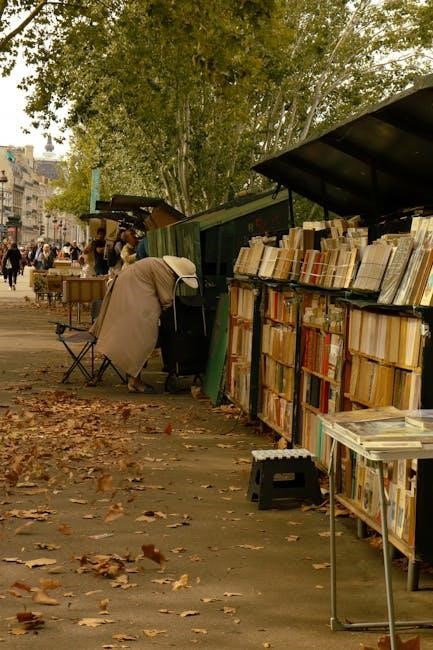
Embark on a journey to explore and discover the natural world through a scavenger hunt. This project encourages observation and connection with the environment, fostering curiosity and creativity. Girls will create a list of items to find, such as leaves, rocks, feathers, and flowers, and record their discoveries. Using a pencil and paper, they can sketch or note the details of each find. The goal is to inspire an appreciation for nature’s diversity and beauty. This activity also introduces the concept of responsible exploration, emphasizing the importance of leaving the environment undisturbed. By completing the scavenger hunt, girls will gain a deeper understanding of the outdoors and develop their artistic observation skills. This foundational project sets the stage for more advanced nature-based art activities.
Project 2: Outdoor Sculpture
Create a unique outdoor sculpture using natural materials like sticks, rocks, leaves, and soil. Begin by brainstorming ideas inspired by nature, such as animals, trees, or abstract designs. Gather materials responsibly, ensuring not to harm the environment. Use sticks to form the base structure and decorate with leaves, rocks, or flowers. Experiment with textures and shapes to bring your vision to life. Consider building a miniature home for small creatures, like a fairy or Brownie Elf house, as part of your sculpture. This project encourages creativity and connection with nature while promoting environmental stewardship. Remember to follow Leave No Trace principles by using biodegradable materials and leaving the area as you found it. Your sculpture will serve as a temporary art piece, blending seamlessly into the natural landscape.
Project 3: Natural Dye Art
Explore the art of natural dyeing by using materials from nature to create unique colors on fabric or paper. Start by gathering items like leaves, flowers, turmeric, and indigo. Boil these materials in water to create vibrant dyes. Dip fabric or paper into the mixture, observing how the colors change and blend. Experiment with different combinations to achieve unique shades. For example, onion skins create orange tones, while coffee or tea can produce earthy browns. This project teaches girls about the science behind natural pigments and encourages creativity. Extend the activity by designing patterns or shapes using leaves or flowers before dyeing. This eco-friendly art form connects girls with nature while fostering an appreciation for sustainable creativity. The results are not only colorful but also meaningful, as they reflect the beauty of the natural world.
Project 4: Earth Art

Earth art, or land art, invites girls to create temporary or permanent designs using natural materials found outdoors. Start by exploring your surroundings to gather items like rocks, sticks, leaves, and pinecones. Use these materials to create patterns, shapes, or sculptures on the ground or in a designated space. For example, arrange leaves into a spiral or build a rock mandala. This project encourages girls to think creatively about their environment and how they can use natural elements to express themselves. Discuss the importance of leaving no trace and ensure that the artwork is temporary to avoid harming the ecosystem. Earth art fosters a deeper connection with nature while allowing girls to explore their artistic side in an open-air setting. Encourage them to take photos of their creations to remember their designs without disturbing the natural space.
Project 5: Collaborative Mural
The Collaborative Mural project encourages teamwork and creativity as girls work together to design and create a large-scale outdoor artwork. Start by brainstorming a theme, such as nature, seasons, or community, and sketch ideas on paper. Use natural or recycled materials like paint, sticks, leaves, or fabric to bring the mural to life on a large surface, such as a wall, fence, or even the ground. Each participant contributes their own artistic touches, fostering collaboration and shared ownership. Once complete, take photos to document the artwork, as it may be temporary. Reflect on the process by discussing how everyone’s ideas merged into a single piece. This project teaches girls the value of teamwork, creative problem-solving, and the joy of making art together in an outdoor setting.
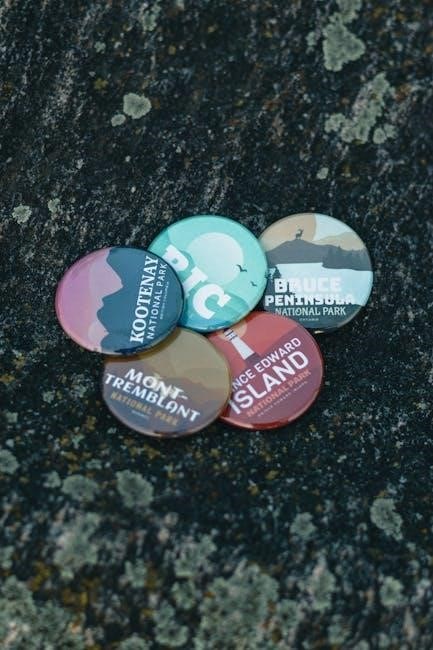
Safe Outdoor Practices
Always be aware of your surroundings, check the weather, and stay on designated trails. Respect wildlife, avoid disturbing plants, and use eco-friendly materials to minimize your impact on nature.
Leave No Trace Principles
When earning the Brownie Outdoor Art Creator Badge, it’s essential to follow Leave No Trace principles to protect the environment. Plan ahead by bringing necessary supplies and knowing the rules of the area. Stay on designated trails to avoid damaging plants and wildlife habitats. Dispose of waste properly, including food scraps and recyclables, to keep nature clean. Leave plants, rocks, and other natural items in their place to preserve the ecosystem. Avoid making unnecessary noise or disturbing wildlife. Be considerate of others by sharing space and keeping groups small. These practices ensure that outdoor spaces remain beautiful and untouched for future generations of artists and explorers.
Weather and Terrain Awareness
Understanding weather and terrain is crucial for a safe and enjoyable outdoor art experience. Always check the weather forecast before heading out and dress appropriately for conditions. Rain, heat, or cold can impact activities, so plan accordingly. Familiarize yourself with the terrain to avoid slippery surfaces, steep slopes, or uneven ground. Stay on designated trails to prevent accidents and respect sensitive habitats. Wear sturdy shoes and bring necessary gear like a hat, sunscreen, or extra layers. Be mindful of changing weather patterns and know when to seek shelter. Teaching girls to read their environment ensures they can create art safely while exploring nature. This awareness fosters responsibility and respect for the outdoors, making every art project a positive experience.
Wildlife and Plant Safety
Respecting wildlife and plants is essential for safe outdoor art activities. Teach girls to observe animals from a distance and never feed or disturb them. Avoid touching or picking plants, as some may be harmful or protected. Encourage the use of gloves when handling unknown materials. Remind participants to stay on trails and avoid damaging habitats. Emphasize the importance of not removing plants or rocks from natural areas. Ensure they understand how to safely interact with their environment. This fosters a culture of care and respect for nature, allowing girls to create art responsibly while preserving ecosystems for future generations.